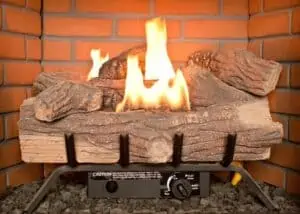How to Repair Damper in Fireplace?
The damper in your fireplace is an important component of your heating system. This is because it regulates the draft that goes up and out your chimney. It also helps prevent smoke from entering your home. When the damper fails to work properly, the air in your house may become unhealthy, and your fireplace may not be as efficient as it should be. If you have a damper that is failing, you should get it fixed as soon as possible.
(Looking for a fireplace repair technician? Contact us today!)

Getting a damper repaired can be a relatively simple DIY project. However, before you start, you should remember to wear proper safety gear and be aware of your surroundings. Also, keep pets and children away from the area.
One of the most common problems with dampers is that they get stuck. This is most often caused by rust. Rust can form when rainwater from the outside accumulates in the chimney. To prevent this from happening, you should clean the chimney and clean the damper. You should also apply a lubricant to the movable joints.
Other common causes of dampers that get stuck include heavy creosote buildup and debris accumulation. Both of these can make the damper difficult to operate. For these reasons, you should inspect your damper regularly to ensure that it is in good working condition.
The damper is actually a steel or cast iron door that sits between your chimney and your firebox. Some dampers will open in a downward motion and some will open in a sideways direction. Either way, you should use a metal scraper to remove any accumulated dirt.
The damper is a great example of a technology that has been around for a long time. In fact, a damper was invented decades ago to help homeowners control the draft of their fireplaces. Even if you do not have a damper, you can buy one at a hardware store. Aside from helping you control the draft of your fireplace, a damper also helps you avoid wasting heat when you are not using it.
There are various ways to check if your damper is failing, but one of the most effective is to place your hand on the fireplace and see if the handle opens. Sometimes, the damper will not open at all, which means that the smoke in the chimney is getting back up into your house. This is a serious problem that can lead to carbon monoxide poisoning.
Another way to test your damper is to put a lighted match near the top of your stove. If your damper is open, you should be able to see smoke and flames pulling up the flue. But if your damper isn’t opening at all, you may need to get a new damper.
The damper in your fireplace is a crucial component of your heating system, so if it becomes inoperable, you should fix it right away. You can do the job yourself, or you can hire a professional.

